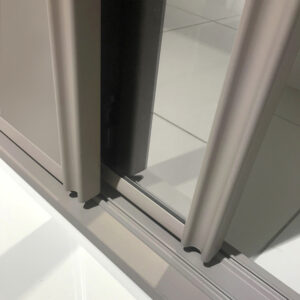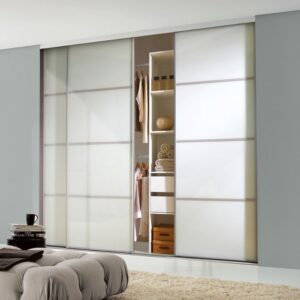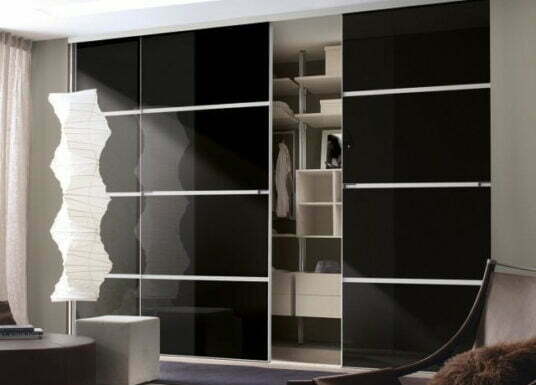How to Prevent Damage to Your Sliding Wardrobes?
Sliding wardrobes are a fantastic way to maximise storage space while maintaining a sleek and stylish aesthetic in your home. They help keep your belongings organised and, when properly maintained, can last for years without any issues. However, like all furniture, they require regular care and attention to prevent wear and tear. If neglected, they can become difficult to open and close, suffer from misalignment, accumulate dirt and dust, or even develop more serious issues like shattered glass or mould growth.
To ensure your sliding wardrobes remain in top condition, let’s examine common issues and how to prevent them.
Keeping Your Wardrobe Rollers Clean
One of the most common issues with sliding wardrobes is difficulty in movement. If your doors feel stiff, don’t slide as smoothly as they used to, or make a grinding noise, the rollers have likely accumulated dust and debris. The rollers play a crucial role in ensuring the smooth functioning of sliding doors, so keeping them clean is key to longevity.
Why Do Rollers Get Dirty?
As you use your wardrobe daily, tiny particles of dust, hair, dirt, and general household debris naturally gather in the tracks. Over time, this build-up can clog the rollers, making it harder for the doors to move effortlessly. Left unchecked, this can lead to long-term damage.
How to Clean Wardrobe Rollers
Follow these simple steps to keep your rollers in the best shape:
Vacuum the Tracks – Use a vacuum cleaner to remove loose debris from the tracks before applying any cleaning solution. A nozzle attachment works well to get into the small crevices.
Wipe Down with a Gentle Cleaning Solution – Mix a mild detergent or soapy water and use a microfibre cloth to wipe the rollers and tracks. Avoid using harsh chemicals such as white spirits, turpentine, or vinegar-based cleaners, as these can damage the material of your wardrobe.
Apply a Silicone-Based Lubricant – Once the tracks are clean, apply a small amount of silicone-based lubricant to keep the rollers gliding smoothly. Avoid oil-based lubricants, which can attract dust and dirt, leading to quicker build-up.
By incorporating this simple maintenance task into your regular cleaning routine, you’ll extend the lifespan of your wardrobe and ensure the doors continue to operate effortlessly.

Maintaining the Framework of Your Sliding Wardrobe
While the focus is often on the doors and their movement, the wardrobe frame is just as important. Over time, grime, moisture, and dust can accumulate on the frame, affecting its appearance and functionality. If the frame isn’t cleaned regularly, it can become discoloured, and in some cases, dirt build-up can interfere with the doors’ movement.
Steps to Clean the Wardrobe Framework
Vacuum First – Before wiping the frame, vacuum to remove any loose dirt or dust. This prevents you from rubbing the dirt further into the material when cleaning.
Use a Soft Cloth and Mild Solution – Dampen a microfibre cloth with a mild detergent or soapy water and wipe down the frame. Pay extra attention to any grooves where dirt might accumulate.
Rinse and Dry Thoroughly – After cleaning, wipe down the frame with clean water to remove any soap residue. Then, dry it immediately with a soft cloth to prevent water damage.
Regular cleaning will help maintain the frame’s finish and prevent dirt from affecting the doors’ sliding mechanism.
Checking and Fixing Wheel Alignment
If your sliding wardrobe doors are becoming difficult to open or close, misalignment could be the culprit. Over time, the wheels and running gear can shift slightly, causing the door to sit unevenly on the track. If this happens, you might notice the door dragging or not closing fully.
How to Identify a Wheel Alignment Issue
- The door isn’t closing properly, leaving gaps.
- The movement feels rough, stiff, or uneven.
- You notice an audible scraping or grinding noise when opening or closing.
How to Fix Misalignment
- Check for Obstructions – Ensure that no dust or debris in the tracks prevents smooth movement.
- Adjust the Rollers – If the door looks uneven, use the adjustment screws (usually located at the base of the door) to fine-tune the alignment.
- Tighten Screws and Fixings – Loose screws can contribute to misalignment, so check and tighten them to ensure the door stays on track.
Regularly checking alignment can prevent a minor issue from escalating into a more significant problem.

Preventing and Dealing with Shattered Glass
Most modern sliding wardrobe doors use tempered glass, designed to shatter into small, less harmful pieces rather than sharp shards. However, broken glass can still be dangerous and should be handled carefully.
How to Prevent Glass Damage
- Avoid Slamming the Doors – Forcefully Closing the doors can weaken the glass over time.
- Ensure There Are No Obstructions – If something is blocking the door from closing properly, forcing it shut can lead to cracks.
- Keep the Room Temperature Stable – Sudden temperature changes can cause the glass to expand or contract, making it more vulnerable to breakage.
- Regularly Inspect for Chips or Cracks – If you notice any imperfections, get them checked by a professional before they worsen.
What to Do if the Glass Shatters
If your wardrobe glass does break, avoid attempting to clean it yourself—especially if you have young children or pets in the house. Instead, call a professional to handle the clean-up and replacement safely.
Preventing Mould Growth in Your Wardrobe
Mould might not be the first problem you think of when it comes to sliding wardrobes, but it’s a surprisingly common issue. Poor ventilation and moisture build-up can create the perfect conditions for mould to grow inside or behind your wardrobe.
How to Prevent Mould in Your Wardrobe
- Allow Air Circulation – To encourage airflow, keep the wardrobe doors slightly open. If you’re installing a new wardrobe, consider adding ventilation holes.
- Store Only Dry Items – Never store damp clothing, as moisture encourages mould growth.
- Use a Dehumidifier – A small, inexpensive dehumidifier inside the wardrobe can help absorb excess moisture.
- Clean Regularly—After cleaning, Wipe down the interior and exterior with a dry cloth to remove any lingering moisture.
How to Remove Mould If It’s Already There
- Wear Protective Gear – Mould spores can be harmful, so always wear gloves, a mask, and protective clothing.
- Use the Right Cleaning Solution—Vinegar, borax, or diluted bleach can help remove mould. Apply it to the affected area, let it sit for 15 minutes, then scrub gently with a brush.
- Thoroughly Dry the Area – After cleaning, dry the wardrobe completely with a cloth or hairdryer, and leave the doors open to allow proper air circulation.
What If There’s Mould Behind the Wardrobe?
If you suspect mould has grown behind your wardrobe, it is crucial to remove the unit and clean the wall behind it. In severe cases, you may need professional mould removal services to ensure it doesn’t return.

Speak To Our Team At Sliding Robes Direct For More Support Today!
Your sliding wardrobe is an essential part of your home, and it can last for decades with the right care. By keeping the rollers clean, maintaining the frame, checking alignment, preventing glass damage, and staying vigilant against mould, you can avoid costly repairs and keep your wardrobe looking and functioning at its best.
Maintenance goes a long way—so why not take a few minutes today to check your sliding wardrobe? Your future self will thank you!

